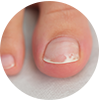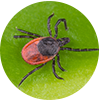
Antibiotics and chemotherapeutics are drugs that are used to treat bacterial infections, and they differ in both chemical structure and use. For that reason, other information about the method of use and other restrictions is available to the patient at the time of dispensing.
Some antibiotics have a so-called photosensitizing potential – the skin becomes more sensitive to light (especially to ultraviolet radiation) and an intensified skin reaction may occur.
Antibiotics and chemotherapy drugs that can cause photosensitivity reactions include:
It is therefore appropriate to:
The skin's reaction to sunlight can manifest as:
Undesirable photosensitive effects of antibiotics can be mitigated by cooling the skin (cold compresses, soothing body lotion...) or by administering anti-allergy drugs. More serious skin reactions should be assessed by a doctor.
Free according to the web portal of the Czech Chamber of Pharmacy for the public Lékárnické kapky, 30/08/2023

30. 6. 2024
Onychomycosis, or fungal nail disease, is most often caused by filamentous fungi (dermatophytes) and yeasts. It mainly affects the legs, but...

31. 5. 2024
Due to the early arrival of spring and mild winter, ticks attack much earlier this year. Not only the numbers of infected parasites are starting to rise, but also the ...